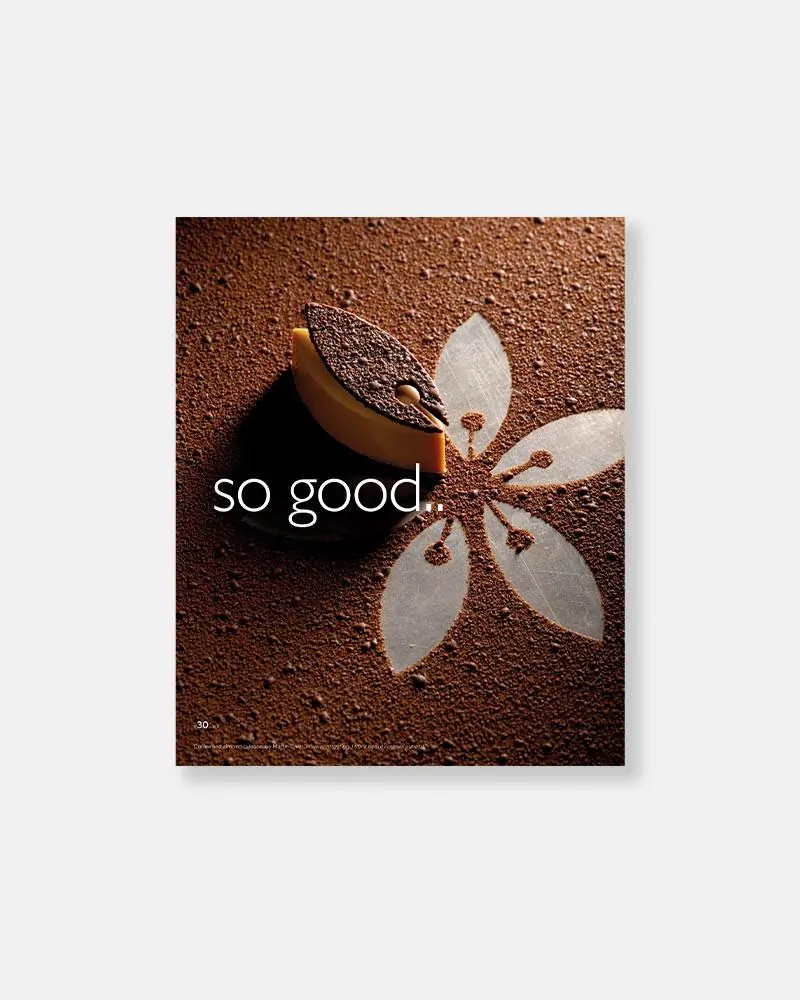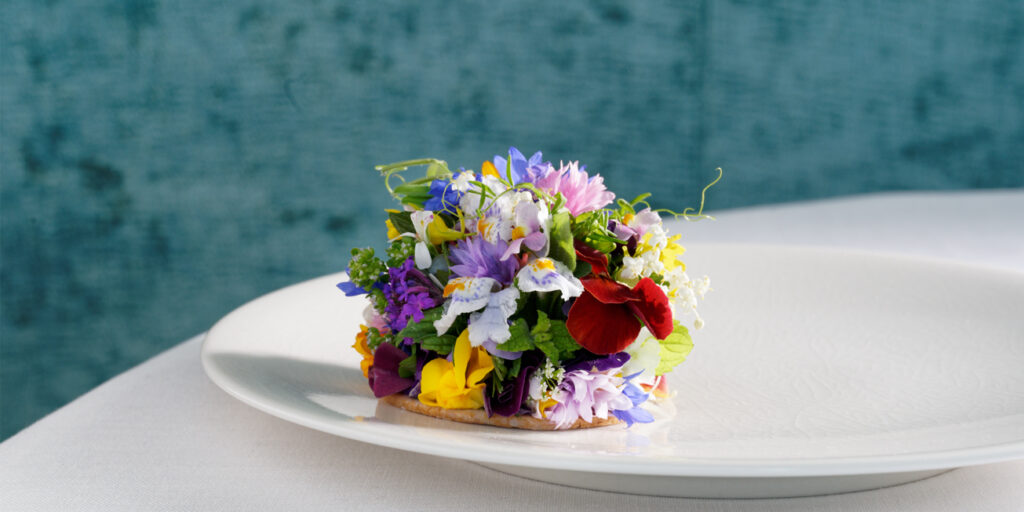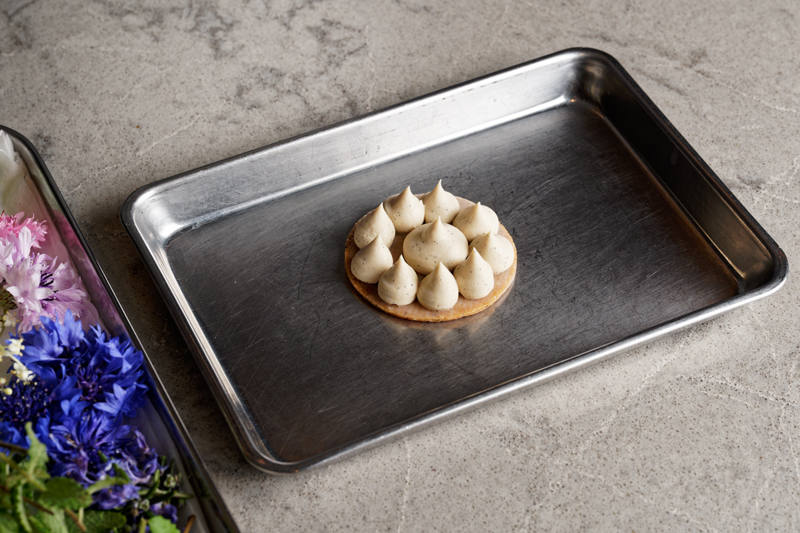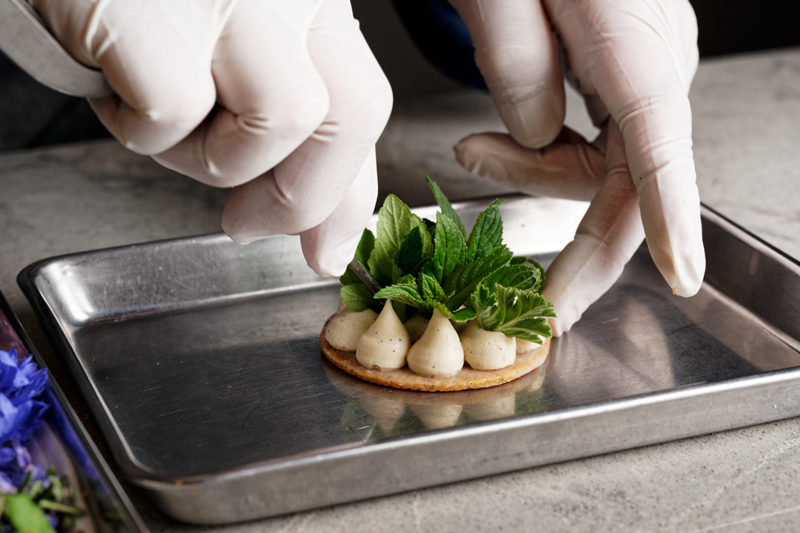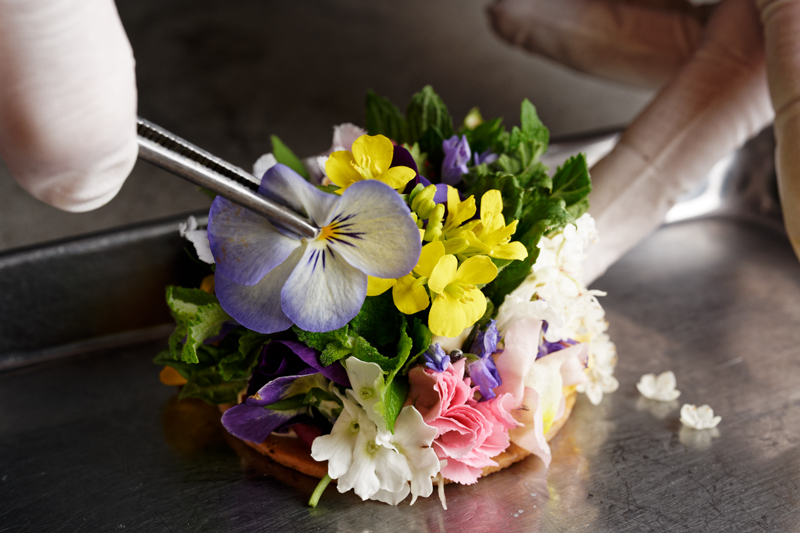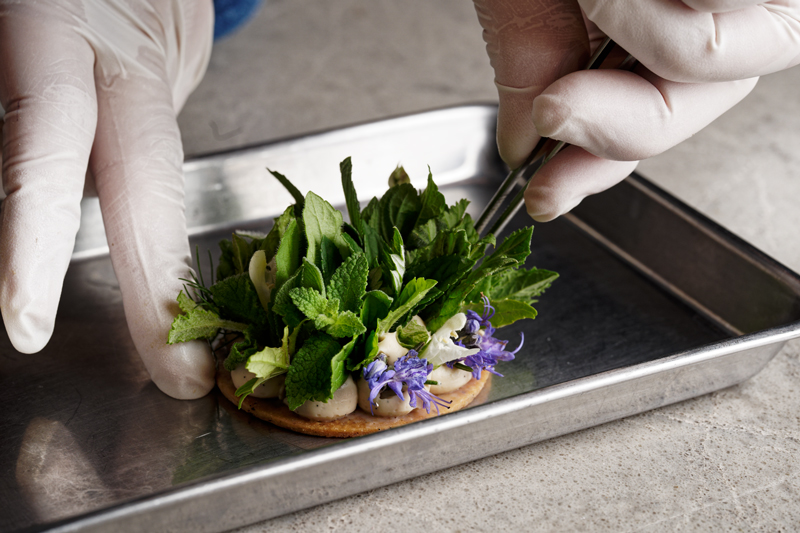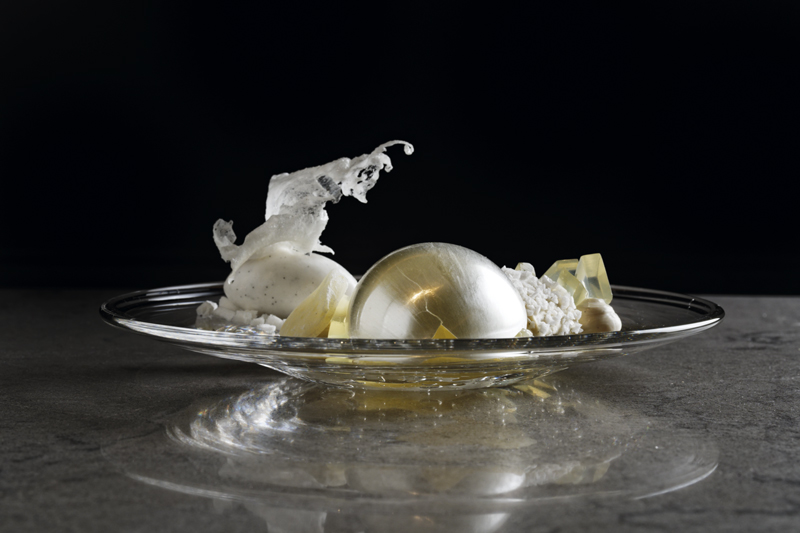Categories Pastry Chef Articles
Satoyama Tart of Flowers by Mineko Kato, a dessert for a better future
Photos: Noriko Carlow
FARO, an innovative Italian restaurant, sits on the 10th floor of the Tokyo Ginza Shiseido Building, one of the most iconic buildings in Ginza. Dining here is full of surprises and impressions without any gimmicks like immersive visual effects in the space. Some customers have been moved to tears when eating the ‘Satoyama Tart of Flowers’ by Mineko Kato, served as a dessert at the end of the course, saying, ‘the aroma of wildflowers that fills the mouth brings back childhood memories.’
In so good.. magazine 30 we delve into the creative universe of this chef.
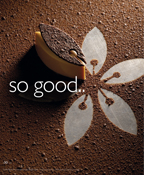
In 2018, FARO underwent a transformation from serving authentic Italian cuisine to offering sustainable gastronomy under the ownership of leading cosmetics company Shiseido, and Mineko was assigned to her current position. She has lived abroad since she was a teenager and worked for Italian Vogue magazine before entering the pastry world and gaining experience in restaurants in Italy. According to Kato, gastronomy’s role extends beyond providing mere pleasure to the taste buds. Instead, it should aim to stimulate people’s minds and promote their cerebral evolution. In her perspective, food can play a crucial role in changing the world for the better in the upcoming years, creating a harmonious co-existence between humanity and nature.
“Satoyama” tart of flowers
The ‘Satoyama Tart of Flowers’ represents Kato’s aspiration that satoyama will continue to thrive even after 50 years from now. Satoyama, the border between highly natural forests and mountains (yama) and human settlements (sato), provides natural environments such as farmlands, grasslands, and reservoirs humans have created over the years. It has not only nourished biodiversity but has also developed culture through human contact with nature. ‘The flowers and grasses used in the tarts are sent to us by farmers from all over Japan who have picked them from the satoyama. Many of these farmers are elderly, in their 70s and 80s, and I fear that if they disappear, the satoyama will also vanish,’ she states.
“This dessert is inspired by the Italian after-dinner digestif, amaro. Amaro is a sweet, pleasantly bitter digestive aid made from dozens of herbs and flowers.
“This dessert is inspired by the Italian after-dinner digestif, amaro. Amaro is a sweet, pleasantly bitter digestive aid made from dozens of herbs and flowers. I made a tart with a plant-based dough topped with a plant-based vanilla pastry cream and filled with 30 to 40 different herbs and flowers. It represents the scenery of a satoyama in spring, which I encountered when I visited a farmer. And I asked him to send me native wildflowers that grow in satoyama, combined with herbal remedies learned in Italy. Combined with phytotherapy, I mix different flowers every day, not only for their appearance, but also for their fragrance, efficacy and taste. The message that I want to convey is fleeting and ephemeral, ‘Will the landscape of the satoyama still exist 50 years from now?’”
